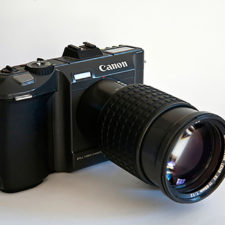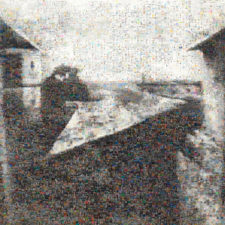 Exactly 40 years ago, in 1975, Steve Sasson of Kodak introduced the world’s first digital camera: this prototype, made of components from other electronic devices, was capable of storing the image on a magnetic tape in only 20 seconds.
Exactly 40 years ago, in 1975, Steve Sasson of Kodak introduced the world’s first digital camera: this prototype, made of components from other electronic devices, was capable of storing the image on a magnetic tape in only 20 seconds.
We should wait a few years, until 1981, for “Mavica“, Sony’s prototype hybrid, a sort of camcorder capable of recording individual frames, the first 1986-like digital SLR, the Canon RC-701 (only in 1991, with the Kodak DCS-100, we have the first real reflex “Electronics”), the 1988 for the first machine with flash memory card (Fuji DS-1 p) and even the 2000 for the first full-frame SLR (with sensor , 24 x 36 mm format), the Contax N Digital.
It was the beginning of a new era, of digital photography, for today’s recording technology prevailing images: indeed, if up to 2000 the quality of these instruments was still significantly lower than the analog photography, from that time onwards, however, the market saw the appearance of instruments (such as the Canon EOS 1 d and the Nikon D1) and acceptable quality.
By substituting photosensitive support with a sensor that captures the light pulses and then convert them into electronic signals based on binary code ready to be stored on storage media, the digital camera has essentially sanctioned the end of the era of film and the entry into the new world in which the relationship between image and consequent captured scene was absolutely immediate.
By taking the photo in real click: a continuous stream of data (Jean Baudrillard, 2006) based on the immateriality (at least until print).
The revolution introduced by digital photography has not covered the specific photography, nor the essential architecture of the machines (lens, Aperture, focus, exposure meter, shutter release remain the same), but rather the ability to record images captured, ensuring speed and immediacy, the same elements that will constitute the world of new media and web network, in which not surprisingly, the photograph is the protagonist.
From the scene framed the file, ready to be shared and disseminated in a indissoluble interweaving between production, perception and enjoyment (Roberta Valtorta, 2008).
It is not so out of place to say, citing Andreas Müller-Pohle, that the digital revolution has not covered and does not concern only the photo, but “the whole world we live in“. In addition, data quantization in the photographic process did nothing but enhance a dimension already exists in the medium and its uncontrollable reproducibility combined with an ability to represent (not present) the reality thanks to post-production software of raster files.
In fact, the real challenge which saw committed those who lived the transition from silver “photography” to that “numbers” was not at all to learn to use a new type of machine, but rather to learn to use computers and image manipulation software. In short, what has changed is not the technique, but the management of the image in the post-shot due to the introduction of the instrument of the post-modern era: the computer as a real cultural hub.
Today’s digital natives, sons of “computerization of culture” (Lev Manovich, 2001) already know that it will be necessary for them to become familiar with these tools (computers and software), but they should also know that just because the specific photography hasn’t changed, so you should always study the basics of photography (even with an old Nikon F2 or using an optical bench fitted with plates), combined with a serious deepening of historical nature: this is the only way we can become good photographers, digital or analog, it does not matter!
Firenze 04-06-2015 – Gaia Vettori







